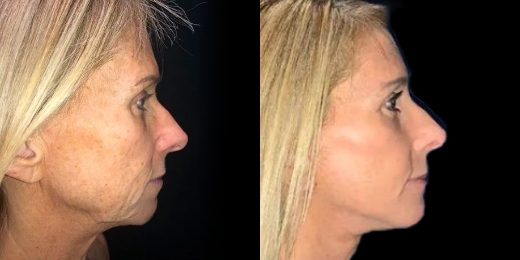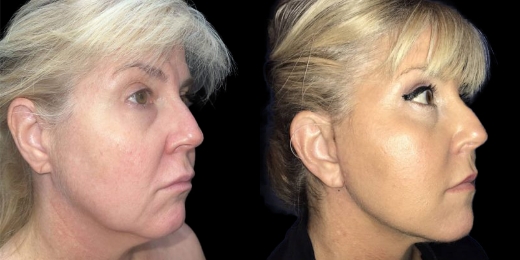Who is an ideal candidate for hair restoration surgery?
Nearly any patient with baldness or thinning hair can undergo hair restoration surgery. Ideal candidates for this procedure have healthy areas of hair on the sides and/or back of the head that can serve as donor areas for this procedure. Patients with hair loss caused by scalp injuries or certain cosmetic procedures often have larger areas of potential donor hair, as hair loss may be restricted to smaller areas.
How will it look after the procedure is performed?
The result after a Follicular Unit Micrografting Hair Restoration is a full head of real hair that is natural looking and virtually undetectable.
Where is the procedure performed?
This hair restoration procedure is painless, takes just a couple of hours to complete and is performed in Dr. Greenberg’s Long Island office which is a Fully-Accredited, Beautifully-Appointed Ambulatory Surgery Center.
How is the hair restoration procedure performed?
Hair restoration involves removing hair-bearing strips of the scalp from the back and sides of the head, which are then harvested into single follicular unit grafts of hair that are precisely placed in the targeted area. Tiny incisions are made in the recipient area, into which the grafts are placed. Hair grafts will continue to grow as normal hair in their new location. Graft size can be customized depending on each patient’s individual needs and goals.
What happens after surgery?
After hair restoration surgery, patients can usually return to work and other regular activities within 24 hours, although strenuous exercise should be avoided for longer. There may be some swelling around the eyes, or itching and crusting at the treatment site. These symptoms usually subside within seven days.
What results can be expected?
The results of hair restoration surgery appear gradually as the transplanted hair falls out and then regrows to restore a natural appearance. Hair growth usually begins after three months and will continue to grow as normal hair. The incisions will fade over time to become less noticeable as well. Desired results may be achieved after approximately six months, although this varies from patient to patient.
How many procedures are needed?
The number of procedures needed depends on the extent of hair loss, as well as the patient’s physical characteristics and goals for treatment. For some patients, a single session may be all that’s needed, while others will require more. Dr. Greenberg will determine how many treatments are needed for each individual patient.
Are there any risks associated with hair restoration?
As with any type of surgical procedure, there are certain risks associated with hair restoration, which may include bleeding or infection, among others. These risks are considered rare and can be further reduced by following instructions given by Dr. Greenberg and his staff before and after treatment.
For more information and a video visit our Hair Restoration Section


